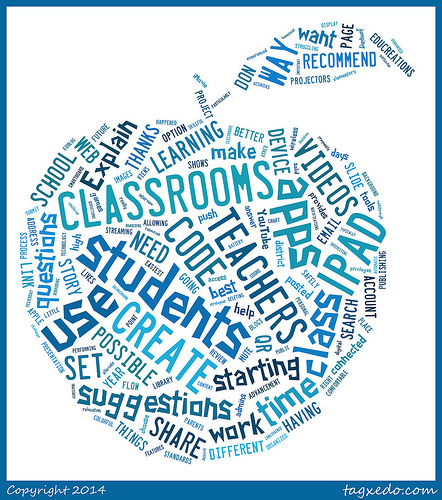By [the author] on [the date]
In recent years, there has been a marked boom in the number of iPad apps designed to support students with autism, with the mission of developing their learning and communication skills. Some of the tech companies responsible for this rise claim that their apps are based on extensive research and educational strategies proven to work with children with autism, on a delivery platform that suits their interests. Yet, given the limited research on the effectiveness of iPad apps for children with ASD (Autism Spectrum Disorder), there is more than enough reason to be skeptical of these claims.

Dr. Pat Mirenda is a Professor in the Department of Educational and Counselling Psychology, and Special Education, specializing in autism. “There have only been a handful of studies looking at whether kids with autism learn as well with iPads. One of them was by a Master Thesis student from UBC who graduated last year, Alexandra Voroshina. She compared traditional paper and pencil instructional materials to iPad-based materials and asked: do iPad apps have an advantage over pencil and paper in teaching academic skills to children with ASD, or it is a tie? Voroshina then conducted a careful study where she found iPad apps to teach two students with ASD basic tasks and then she made paper and pencil versions of the apps. Ultimately, the only difference between the two conditions was that one was pencil and paper and the other one was iPad.”
At the start of the study, Voroshina expected the iPad to win, as most people argued that it would be a more effective learning pathway than paper and pencil. However, one of the students was so overstimulated by the iPad that it hindered any productive learning. He always performed better with paper and pencil.
“When you really get down to it, there is not necessarily an advantage. There may be for some kids, but it is not as black and white as people might think. It may be that it is more motivating, it may be that it is distracting. So you really need to be careful in terms of assuming, I think people assume that it is going to be better. Go in any website and they will tell you that their apps are the best ones, but we don’t know empirically that this is actually better” revealed Mirenda.
At present, most of the iPad apps produced for students with ASD are for early education childhood, pre-school and in some cases, kindergarten. One such example is SkillChamp by Infiniteach, an app that teaches ten foundational level skills for students with ASD, including colour matching and happy/sad face recognition. Nevertheless, while tech companies such as Infiniteach envision a future where their apps can be fully incorporated as a staple in the classroom, the reality is that for learning in schools today, the vast majority of children are not using iPad apps. Rather, instructors often add them into their classroom structure following the completion of an assignment as reinforcement or a reward for completing the task.
Although the bene fit of iPad apps to students is still up for debate, iPad apps can both time and cost effective for instructors. Creating learning activities on an iPad allows instructors to cut down the time spent producing and organizing classroom materials, allowing them to use that time in other productive ways e.g. designing assignments, supporting other students.
fit of iPad apps to students is still up for debate, iPad apps can both time and cost effective for instructors. Creating learning activities on an iPad allows instructors to cut down the time spent producing and organizing classroom materials, allowing them to use that time in other productive ways e.g. designing assignments, supporting other students.
“In Voroshina’s study, she kept track of how much time and money it took her to create the activities in the two scenarios. Some of the tasks were quite complex and she needed to laminate them, so it took her somewhere between 15-20 dollars and between 1.5 to 5 hours to produce the pencil and paper version. Not counting the original cost of the iPad, creating the activities on the iPad was free and took her only minutes. So maybe the hype is partly because of teacher convenience.” said Mirenda.
Given that these new apps do not always work with ASD students as well as we are often led to believe, perhaps we should shine the light on other technologies that have been successful with students with ASD: smartboards. With their high-quality visuals and interactive nature, smartboards can be an engaging addition to an ASD classroom, enabling students to move things around and to work collaboratively on a task.
“If I were to build a world for students with autism, it would have a smartboard and a teacher who knows how to use it really well” admitted Mirenda.
Additional materials
- Department of Educational and Counselling Psychology, and Special Education
- Dr. Pat Miranda’s Faculty Profile
- Alexandra Voroshina’s Study Abstract
- Infiniteach